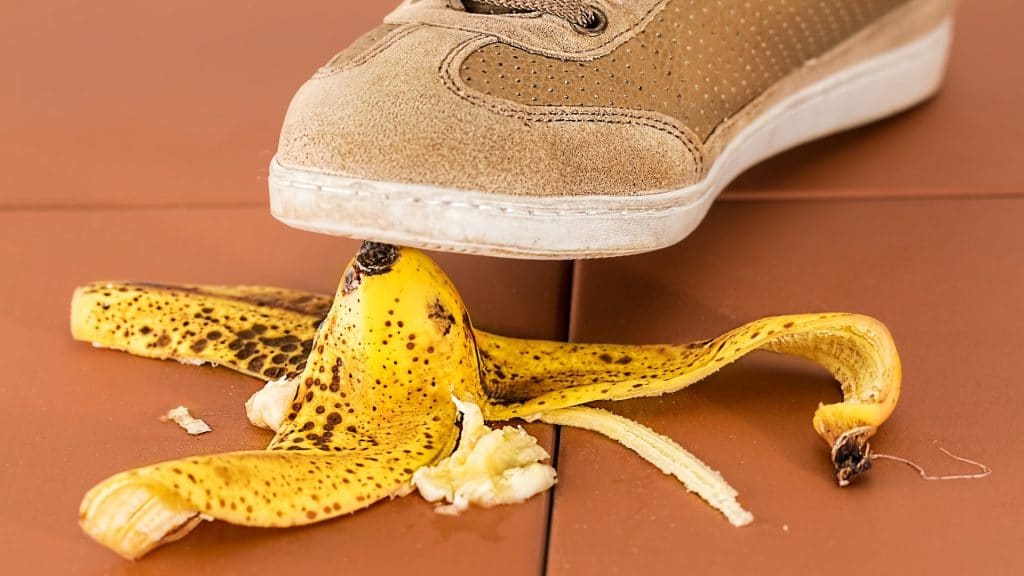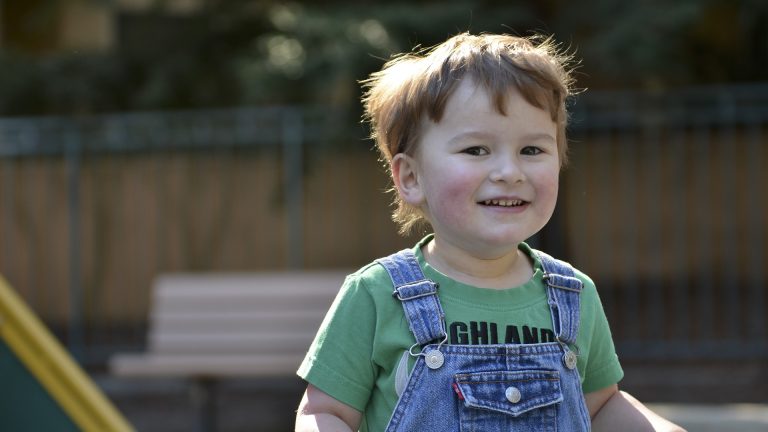36 Eye-Opening Falls in the Elderly Statistics & Facts for 2024

Falls are the primary cause of injury-related ER visits and accidental deaths in people over 65. Now, in the article below, you will get to learn the causes of falls in the elderly, preventive measures, and much more. We have compiled the latest and the most crucial falls in the elderly statistics that illustrate the severity of these falls and emphasize the importance of their prevention.
Top 10 Falls in the Elderly Statistics for 2024
- 67% of falls don’t happen from a height, but rather when individuals slip or trip.
- Isolation due to the pandemic increases the likelihood of a fall-related long lie.
- The prevalence of falls in the elderly is 700,000 to one million hospital patients yearly.
- Every 11 seconds, an older person is receiving treatment for a fall in the emergency room.
- 80% of hospital patient falls aren’t witnessed by staff.
- In the US, accidental falls in older people complicate 2% of hospital stays.
- Every year, 37.3 million falls worldwide result in serious injuries that need medical treatment.
- Someone dies by fall every 19 minutes.
- Falls statistics in the elderly show that older people with hearing loss have three times the risk of an accidental fall.
- Projects aimed at fall prevention have been successful, resulting in a 35% reduction in hospital fall rates.
Reasons for Falls in the Elderly: Statistics and Facts
Read on to find out if the weather is related to falls in the elderly and if older people are more prone to breaking bones after falling. The section below will also elaborate on other factors that increase the likelihood of senior falls, among many other things.
1. 67% of falls don’t happen from a height, but rather when individuals slip or trip.
(Aging) (Pallet Enterprise)
One of the most common causes of falls in the elderly is the weather. Why do seniors fall because of it? Storms or rainy weather may cause leaks, making it easier to slip.
Unorganized spaces, cluttered by storage boxes, out-of-place cords, and furnishings increase the risk of falls, too. Relatives and caretakers should keep an eye on these kinds of safety hazards.
Finally, believe it or not, slips, trips, and falls statistics break the news that around 67% of falls are same-level ones where individuals slipped or tripped.
2. As people age, they’re more susceptible to sustaining broken bones after a fall.
(NIH)
Elderly falls statistics affirm that breaking a bone increases the likelihood of being left with a disability. Besides, according to the NIH, broken bones are linked to osteoporosis, which is a severe condition that weakens your bones. Even a minor fall is dangerous if you have this disease.
3. Ill-fitting clothing and shoes increase the likelihood of falling.
(Aging)
Getting the right shoes and clothes is important and decreases the likelihood of experiencing a fall. To be more precise, loose shoes and clothes can catch on a nail, door frame, or pieces of furniture. Consequently, it is important to keep these falls in the elderly statistics in mind when purchasing clothing and footwear.
4. Older people with hearing loss have three times the risk of an accidental fall.
(ASHAWire) (Starkey)
The disability is one of the several factors that cause falls in the elderly, posing a three times increased risk of an accidental fall. Moreover, this risk grows by 140% for each additional ten decibels of hearing loss.
5. Ear disorders affect balance and increase one’s chances of a fall.
(Aging) (The Hearing Center)
Ear infections and stuffiness from colds can be the reason why the elderly lose balance. What’s more, ear balance disorders impede one’s movement, too. Such conditions occur in 35% of Americans over 40.
6. Medical conditions such as Parkinson’s disease may increase the elderly fall risk.
(Wisconsin State Journal)
Statistics about falls in the elderly brought about by Parkinson’s indicate that it increases the risk of falls by affecting the nervous system and impeding movement. Kidney disease and anemia are a few other medical reasons for falling down.
7. Medications such as sedatives and antidepressants also contribute to the increased risk of falling.
(Aging) (NIH)
Facts about falls in the elderly point out the side-effects that can increase the risk of falls:
- Insomnia and nocturia
- Sedation
- Conduction disorders
- Impaired postural reflexes
- Increased reaction times
- Movement disorders
- Orthostatic hypotension.
Following that, make sure you acquaint yourself with all the side effects of your prescribed medication. Talk to a doctor if you find any that could affect your balance.
8. Medicines such as anticonvulsants increase the risk of a high fall, according to elderly falls facts.
(Geriatrics Medicine)
Taking psychotropics such as antidepressants can result in low sodium levels and cause a lack of attention—increasing the likelihood of falls. What’s more, anxiety medications might produce the same side effects in addition to psychomotor dysfunctions, drug dependence, and even delirium.
9. People with central obesity are 37% more likely to fall than those with low or no visceral fat.
(Harvard Health)
A study published in the American Journal of Preventive Medicine included fall histories spanning two years from seniors aged 65 and over. Its senior fall statistics gathered from a sample of about 3,400 older people found that those with central obesity were 37% more likely to experience a fall than those with low to no visceral fat.
Scientists suggest that a higher center of gravity for obese individuals is a major factor for instability (the lower the center of gravity, the more stable something is).
10. Physical inactivity due to the COVID-19 pandemic is linked to falls in the elderly.
(NIH) (BMC)
Now, what makes falls a serious concern for the elderly during the pandemic is insufficient physical activity. Multiple studies have pointed out that physical exercise ought to be a part of a multi-disciplinary strategy aimed at preventing falls and maximizing intervention benefits.
11. Isolation due to the pandemic increases the likelihood of a fall-related long lie.
(NIH)
As for the falls in the home, statistics prove that they can end in serious injuries and a long lie for people who live alone. The lie could last for 24 hours and lead to one’s death.
Statistics on Prevalence of Falls in Elderly
In the section below, you will learn about the prevalence of falls in older adults. We will also provide you with stats on other medical conditions that might be brought about by falls. Without further ado, let’s dive right in!
Older Adult Falls (in Percentages) Reported by State in 2018
[visualizer id=”97365″]
Source: CDC
12. From 2007 to 2016, the incidence rate of falls has increased by 31%.
(APTA)
According to CDC fall statistics, the number of fatal falls among Americans aged 65 and over rose from 18,334 to 29,668. The rates also vary by state. Perhaps, the biggest gap is between Wisconsin and Alabama. The death rates there are 142.7 per 100,000 and 24.4 per 100,000 people, respectively.
13. Every 11 seconds, an older person is receiving treatment for a fall in the emergency room.
(Aging)
Fall injuries can range from a minor cut or bruise to a severe disability. Additionally, falls in the elderly affect them more compared with the general population, as elderly falls facts affirm. That is mainly because of pre-existing health problems, low muscle tone, reduced bone density, and other factors.
14. Every year, 37.3 million falls worldwide result in serious injuries that need medical treatment.
(Nature)
Globally, falls are the leading cause of unintentional injuries in people over the age of 65. Many of them result in severe injuries that ask for medical evaluation and further treatment. As mentioned before, seniors who live alone are at the highest risk of more serious injuries. As for the number of falling deaths per year, it stands at 646,000.
15. In 2014, 29 million elderly Americans got injuries from falls.
(Aging) (CDC)
The same year, the Medicare coverage of those falls totaled $31 billion. In comparison, in 2013, the costs of fall-related injuries amounted to $34 billion, fall injury statistics reveal. Astoundingly, 78% of the expenses were covered by Medicare.
16. The trip, slip, and fall statistics remark that 95% of these end in hip fractures.
(APFM)
Hip fractures can occur in the elderly who suffer from osteoarthritis, and they often require getting surgery or hip replacement. To avoid hip fractures, make sure your home is safe and as fall-proofed as possible.
17. In 2013, falls accounted for nearly 50% of traumatic brain injury (TBI) cases in hospitals.
(PennyGeeks)
Falls in older adults statistics reveal that most TBI hospitalizations are due to falls. Unfortunately, seniors aged 75 and over are the most susceptible to traumatic brain injuries and, ultimately, TBI fatalities.
18. Annually, falls account for 95% of hip fractures in the 300,000 elderly people hospitalized for it.
(The Journal)
Statistics for falls in the elderly assert that 25% of those who fall and fracture their hip die within six months of sustaining the injury, and more than 50% of seniors who recover from hip fractures end up in nursing homes. Falls in nursing homes statistics by the CDC reveal that another half remain in nursing homes for an additional year. It is because recovery from this type of fall is riddled with obstacles.
Falls in Hospitals Statistics
Read on to learn about the prevalence of hospital falls. Namely, you will learn whether these falls are preventable and how many of them are witnessed by staff, among other things.
19. The annual prevalence of falls in elderly hospital patients is 700,000 to one million.
(Patient Safety Network)
Falls occur at a rate of 3–5 times for every 1,000 days spent in the hospital. The prevalence is higher among elderly patients. What’s more, one-third of injuries resulting from these falls are serious. Finally, note that patient falls are considered “never events,” and they aren’t covered by Medicare and Medical Services.
20. 80% of falls aren’t witnessed by staff, according to falls in hospitals statistics.
(Health)
These types of falls tend to happen while sitting, standing, or walking. Many falls also occur in the bathroom or by the patients’ beds.
All in all, the prevalence of these falls seems to be increasing because of the following:
- better medical alert systems
- nurses spending less time with patients
- a growing number of older patients receiving care
- an increased number of patients who are seriously ill or under heavy sedation.
21. Patients’ falls are preventable.
(Van Wey Law)
Patient falls in hospitals statistics confirm a 35% reduction in the fall rate and a 62% decrease in the injury rate in hospitals that follow safety protocols. There are also updated patient care standards that require hospitals to assess patients in their care for the risk of falls.
22. From 2015 to 2016, falls were the most reported incident in UK hospitals.
(National Health Service)
Namely, around 250,000 falls were reported, patients falls statistics confirm. It has also been found that community hospitals have the highest rate of falls per 1,000 bed days. Since elderly patients tend to stay at community hospitals for long periods because of a slower recovery, they’re at a higher risk for falling, possibly falling several times.
23. In the US, accidental falls in older people complicate 2% of hospital stays.
(NIH)
These falls are the most reported in US hospitals. What’s more, statistics on elderly falls in the US show that medical nursing units tend to have the highest fall rates and the highest number of injury-sustaining falls despite having healthier older patients. Interestingly, it is suggested that greater mobility of those patients actually puts them in more situations where they might fall.
24. In the UK, falls in older people account for 77% of all hospital falls, statistics indicate.
(National Health Service)
Of the £2.3 billion spent to cover falls both inside and outside hospitals, 25% of expenses were allocated for the elderly. What’s more, experts at the NHS found that a facility with 8,000 beds will have about 1,500 falls, costing £3.9 million. Note that the sum doesn’t include the cost of rehabilitation services outside of hospitals and assisted care facility stay.
Falls in the Elderly and Mortality
Let’s discover from this section who suffers the most fatalities from falls, how many deaths are caused by falls annually, and what state has the highest rate of deadly falls. For this and much more, keep reading!
[visualizer id=”97361″]
Source: APTA
25. The 1-year mortality rate following fall-related injuries in seniors is at 58%.
(MKInjury) (NIH)
As mentioned before, seniors are at the highest risk for falls and fall-related injuries, seniors’ falls statistics confirm. Even a perfectly healthy senior without pre-existing conditions has a much higher likelihood of falling than a younger person. By the age of 85, around two-thirds of all injury-related deaths can be attributed to falls.
26. Seniors over the age of 60 suffer the most fatalities from falls.
(WHO)
Seniors and fall statistics remark that over 80% of fall-related fatalities happen in low- and middle-income countries. Astoundingly, regions of the Western Pacific and South East Asia account for 60% of these deaths. Overall, worldwide, death rates remain the highest among adults over the age of 60.
27. Every 19 minutes, an elderly person dies by fall.
(Aging)
An impressive 2.8 million injuries are treated in emergency departments every year. Of them, 800,000 require hospitalization. Sadly, 27,000 cases end in the patient’s death.
28. Wisconsin is the state with the highest rate of deadly falls, according to elderly falls facts.
(Madison)
Wisconsin has the highest rate of deadly falls in the elderly population. Shockingly, it claims more lives than prostate and breast cancer together. Furthermore, Wisconsin’s rate of deaths from these falls in people aged 65 and over increased by 19.1% from 2016 to 2019.
Elderly Fall Prevention Statistics
In this section, you will find everything there is to know about preventing falls, backed by the latest elderly fall stats and facts.
29. Keeping hospital pathways clear of obstructions reduces patient falls.
(Medline Plus)
If a fall occurs, the hospital staff report the incident, evaluate the patient for injuries, check for alertness, and keep an eye on them. If the patient can be safely moved, a healthcare professional should assist them back to bed or into a wheelchair with another staff member’s help.
Nevertheless, prevention is the best way to protect patients. Statistics of falls in the elderly show that making floors less slippery and using good lighting are simple but effective fall prevention measures.
30. Projects in fall prevention have been effective, resulting in a 35% reduction in hospital fall rates.
(JCCTH)
These projects also reduced the rate of falls that led to injury by an impressive 62%, falls in the elderly statistics disclosed. One of the most effective projects is the Targeted Solutions Tool devised by the Joint Commission Center for Transforming Healthcare.
In a nutshell, the Preventing Falls Targeted Solutions Tool (TST) is a web-based application designed to assist healthcare organizations in mitigating risk factors via evidence-based solutions, senior fall facts emphasize.
31. To reduce falls in older people with Parkinson’s, the EPDA uses attentional strategies.
(EPDA)
The European Parkinson’s Disease Association (EPDA) explains that attentional cues are helpful because they use the part of the brain unaffected by the disease. For example, with visual cues, an individual can use lines on the ground or patterns on the floor to help stabilize movement and keep steps uniform. Steady rhythms from music or a metronome have a similar effect.
32. At-risk elderly individuals should engage in Tai-Chi and similar exercises.
(TCFHI)
Tai Chi has many health benefits, as per facts about falls in the elderly. As a slow and deliberate form of exercise, it promotes confidence in physical movement. Through this approach, the fear of falling again can be overcome, which is crucial since, for many seniors, this fear actually increases the likelihood of future falls.
33. Fall prevention programs include several components aimed at indicating and lowering the risks.
(WHO)
Some of these prevention programs’ components include introducing clinical interventions to mitigate the risks, addressing low blood pressure, screening for fall risks at home, and wearing hip protectors.
34. Devices with fall detection technology are now on the market to help seniors.
(Apple Insider)
Falls in elderly statistics point to the rise in popularity of medical alert systems and other similar devices for fall detection. Even tech giants like Apple are taking an interest. The Apple Watch Series 4 detects swift movements that indicate the wearer may have fallen using built-in sensors. Then, if the wearer remains immobile for a minute and doesn’t respond to their watch, it contacts emergency services.
35. To reduce falls in hospitals, the CDC introduced the STEADI program.
(CDC)
Following statistics about falls in the elderly, numerous programs are introduced to assess fall risk factors. STEADI is one of those. It promotes the screening of older individuals for fall risk factors. It then works on mitigating them with the community and clinical strategies. All in all, STAEDI components reduce falls as well as healthcare expenditures.
36. Elderly people should regularly stay in touch with their loved ones during the COVID-19 pandemic.
(Your Health Matters)
Falls statistics reveal that the COVID-19 pandemic brings in several risk factors. What older adults can do is wear glasses, hearing and mobility aids, try to be as active as possible, and stay in touch with people, as it is a great way to have an extra set of eyes for protection.
Conclusion
Facts and stats on older adults and falls have proven that falls are a severe health problem with unfavorable consequences. Thankfully, countless strategies have been devised for addressing the possible consequences of falls in the elderly. For instance, if a fall brought about neck pain or neck strain, one could opt for a specially designed pillow aimed at reducing the neck pains and aches. At times, switching to a more organic mattress with optimal firmness helps speed up recovery just as much.
FAQs
Who is at most risk for falls?
Of all age groups, older people have the highest risk of falls. In other words, fall rates are higher in people aged 65 and over. They are also much higher in the older people in nursing homes—as many as 40% of them suffer repeat falls in nursing homes. Statistics by CDC also uncover that 16%–27% of falls occur because of environmental hazards.
What time of day do most falls occur?
In general, falls take place in the daytime. The WHO states that only 20% of falls happen during the night (i.e., between 9 p.m. and 7 a.m.). Notably, most stumble in the dark when going to the bathroom.
What season increases the risk of falls in the elderly?
Winter is the season with a higher risk of falls in countries with marked temperature drops. It is attributed to colder temperatures that make roads slippery. Winter also contributes to a decline in physical activity and can induce mild hypothermia, resulting in slower reaction times.
Where do most falls occur in the elderly?
Most geriatric falls occur at home—about 60% of them. Another 30% of falls occur outside. Finally, approximately 10% of falls occur in healthcare institutions.
How can the risk of falling be reduced?
The fall checklist at home should first include removing any environmental hazards. In both care facilities and at home, good lighting and non-slip mats come in handy. Other measures include wearing fitting clothing and shoes, installing grab bars in the bathroom, and maybe considering a stairlift. Falling down the stairs death statistics reveal that, on average, stairway accidents result in 12,000 deaths annually.
What to do when the elderly keep falling?
The most important thing to do first is to stay calm and ask the person who fell to do so, too, by taking a deep breath. Next, examine them for injuries or bleeding by asking them about the pain’s location and severity. If the damage is severe, don’t move them and call 911 immediately. If it isn’t, proceed slowly but make sure you notify their doctor about the fall.
What to do when an elderly person falls and hits their head?
The first thing you should do is approach calmly and check for responsiveness. If there isn’t any, call 911 and start CPR. If there’s bleeding, stop it by using a rag. And if there is responsiveness, figure out what happened and determine possible injury or source of pain. Finally, help them into a sitting position and observe them for 24 hours.
Why do the elderly die after a fall?
Falls, especially in the elderly, are dangerous and may result in death, as we learned earlier in the article. After a fall, people may die for many reasons, such as internal bleeding, head trauma, or complications due to a bone fracture.
How common are falls in the elderly?
In the US, an older person over 65 falls every second—making falls the leading cause of injury and injury death in this age group. Furthermore, one in four older adults falls every year in the US.
Can a fall in the elderly cause dementia?
When an older person falls, they can experience symptoms similar to dementia. That’s the case of subdural hematomas—bleeding between the covering and the brain’s surface that frequently happens after falls of the elderly. Fortunately, it can be reversed by treatment.
How many seniors die each year from falls?
Approximately 36 million falls take place every year, with over 32,000 ending in death. As many as 48.7% of these deaths can be attributed to head injury, according to falls in the elderly statistics.






